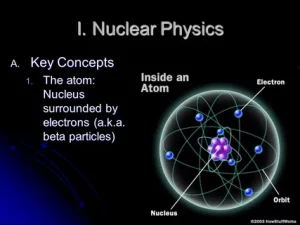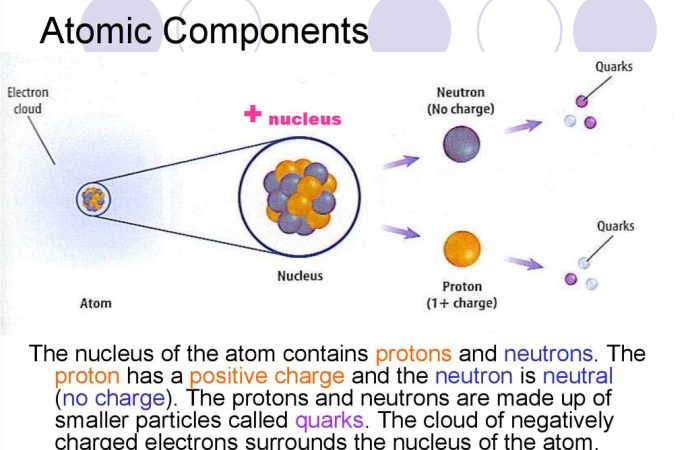Nuclear physics, a branch of physics that delves into the properties and behavior of atomic nuclei, holds immense significance in understanding the fundamental forces and processes governing our universe. From the structure of atoms to the vast energy potential locked within nuclei, nuclear physics encompasses a broad array of phenomena. Let’s embark on a journey
Nuclear physics, a branch of physics that delves into the properties and behavior of atomic nuclei, holds immense significance in understanding the fundamental forces and processes governing our universe. From the structure of atoms to the vast energy potential locked within nuclei, nuclear physics encompasses a broad array of phenomena. Let’s embark on a journey through the intricate world of nuclear physics, exploring its fundamentals, applications, and implications.
Introduction to Nuclear Physics
What is Nuclear Physics?
Nuclear physics focuses on the study of atomic nuclei, which are the central cores of atoms containing protons and neutrons. It examines the interactions between these particles and the forces that bind them together.
Importance of Nuclear Physics
Nuclear physics underpins various scientific disciplines, including astrophysics, particle physics, and energy production. It facilitates advancements in medical imaging, nuclear energy, and fundamental research.
Fundamentals of the Atom
Structure of an Atom
Atoms consist of a nucleus, containing protons and neutrons, surrounded by electrons orbiting in energy shells. The nucleus comprises most of the atom’s mass, while electrons contribute to its size.
Nucleus Composition
Protons, positively charged particles, and neutrons, neutral particles, constitute the nucleus. The number of protons determines an element’s identity, while the sum of protons and neutrons determines its atomic mass.
Understanding Nuclear Forces

Image by : Yandex
Strong Nuclear Force
The strong nuclear force binds protons and neutrons together within the nucleus, overcoming the electrostatic repulsion between positively charged protons. It is one of the fundamental forces governing particle interactions.
Weak Nuclear Force
The weak nuclear force mediates processes such as beta decay, transforming neutrons into protons or vice versa. It plays a crucial role in radioactive decay and nuclear reactions.
Radioactivity and Decay
Types of Radioactive Decay
Radioactive decay occurs through several processes, including alpha decay, beta decay, and gamma decay. Each type involves the emission of particles or electromagnetic radiation from unstable nuclei.
Decay Processes
During alpha decay, a nucleus emits an alpha particle consisting of two protons and two neutrons. Beta decay involves the emission of beta particles (electrons or positrons), while gamma decay releases high-energy gamma photons.
Nuclear Reactions
Fission vs. Fusion
Nuclear fission involves splitting heavy nuclei into lighter fragments, releasing large amounts of energy. Fusion, on the other hand, combines light nuclei to form heavier elements, accompanied by even greater energy release.
Energy Release
Nuclear reactions unleash enormous amounts of energy through mass-energy equivalence, as described by Einstein’s famous equation, E=mc². This principle governs both nuclear power generation and the energy production within stars.
Nuclear Power and Energy
Nuclear Reactors
Nuclear reactors harness the heat generated from controlled nuclear fission reactions to produce electricity. They utilize materials such as uranium or plutonium as fuel and employ various cooling and safety mechanisms.
Nuclear Energy Production
Nuclear energy constitutes a significant portion of global electricity generation, providing a reliable and low-carbon alternative to fossil fuels. It offers a stable source of power with minimal greenhouse gas emissions.
Applications of Nuclear Physics
Medicine
Nuclear medicine utilizes radioactive isotopes for diagnostic imaging and cancer treatment. Techniques such as positron emission tomography (PET) and radiation therapy have revolutionized medical diagnosis and treatment.
Industry
Nuclear techniques find applications in diverse industries, including agriculture, food safety, and materials testing. They enable precise measurements, quality control, and non-destructive testing methods.
Safety and Concerns
Radiation Hazards
Exposure to ionizing radiation poses health risks, including tissue damage and increased cancer risk. Proper safety measures and radiation protection protocols are essential in nuclear facilities and medical settings.
Nuclear Accidents
Historical incidents like Chernobyl and Fukushima underscore the importance of stringent safety regulations and emergency preparedness in nuclear installations. Lessons learned from past accidents inform safety protocols and reactor design improvements.
Future Prospects
Advancements in Nuclear Technology
Ongoing research and development aim to enhance the safety, efficiency, and sustainability of nuclear power. Innovations such as advanced reactor designs, fuel recycling, and fusion technology hold promise for the future of nuclear energy.
Environmental Impact
Addressing concerns over nuclear waste disposal and minimizing environmental impact remain critical challenges for the nuclear industry. Sustainable practices and long-term storage solutions are areas of active exploration.
Conclusion
Nuclear physics illuminates the inner workings of the atomic nucleus, unraveling mysteries of the universe and driving technological innovations. From powering cities to saving lives through medical imaging, its applications are far-reaching and profound. As we navigate the complexities of nuclear science, fostering safety, sustainability, and scientific inquiry is paramount for a brighter future.
FAQs
What is nuclear fusion?
Nuclear fusion is a process in which two atomic nuclei combine to form a heavier nucleus, releasing vast amounts of energy in the process. It powers the sun and holds potential for clean, sustainable energy generation on Earth.
How does nuclear power generation work?
Nuclear power plants utilize controlled nuclear fission reactions to heat water and produce steam, which drives turbines to generate electricity. The heat generated from fission reactions is converted into usable energy.
What are the risks associated with nuclear energy?
Risks associated with nuclear energy include the potential for accidents, radioactive waste disposal, and proliferation of nuclear weapons technology. However, stringent safety measures and regulatory oversight mitigate these risks.
Can nuclear waste be recycled?
Yes, nuclear waste can be recycled through processes such as reprocessing, which extracts usable materials from spent nuclear fuel. Recycling reduces the volume of waste and recovers valuable resources for reuse.
















